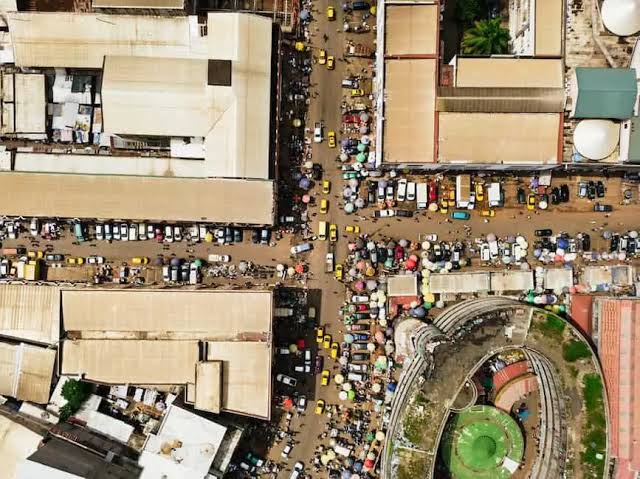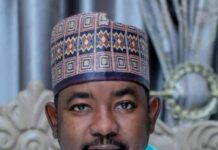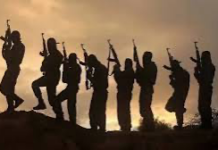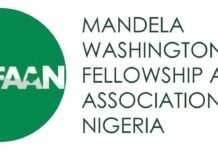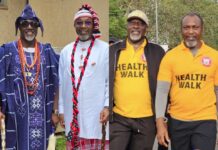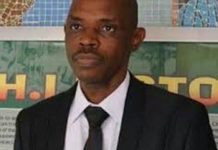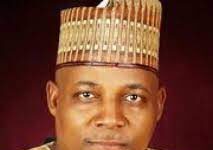Lagos Vs Kano
By Suleiman A. Suleiman
Economists have an intriguing concept they call night lights, or nighttime lights. It refers, roughly, to the aggregate contrast of brightness and darkness during the night in a city, country, or region as captured by satellite imagery.
Night lights are used by economists as a proxy to measure a wide range of economic variables, such as disparity in the overall domestic product, poverty, inequality, infrastructural development, etc, between or particularly within, countries and regions of the world, where other kinds of data are not available or are unreliable.
One famed example of this concept is the contrast nighttime satellite imagery reveals between the two Koreas: the South is infinitely bright, the North infinitely dark, reflecting the state of economic development between the two countries. Satellite imaging does the job of capturing night lights in better detail, of course, but even the naked eye looking down from a plane during the night can try.
Anyone who has tried it could easily see that the difference in night lights between Lagos and Kano could not be starker: the one is a huge mass of brightness; the other only a few bright spots here and there.
Night lights in Lagos would pale in comparison to Johannesburg, Singapore, Dubai or London. But the point is that night lights, like news headlines, internally generated revenues (IGR), voting figures and patterns, school enrollment numbers, population growth rates, etc, would each for its own reasons, tell us stories about the direction and pace of travel by the two most populous states in Nigeria. News headlines from the two states last week illustrate this point.
In Lagos, the major news was President Bola Ahmed Tinubu’s inauguration of the Lagos Rail Mass Transit, Red Line, which, according to Governor Babajide Sanwo-Olu, would convey 500,000 passengers daily. In Kano, the news was all about Hisbah, a moral police organisation that still can’t find its place legally or operationally, nor in terms of real impact on society.
But beyond night lights and news headlines, we must look to self-identity, the prevailing type of politics, and invariably, the quality of leadership at each since 1999 in order to fully appreciate the widening developmental gap between Lagos and Kano.
They have much to compare between them. They both loom large in Nigerian political affairs. They are the two most populous and diverse cities in Nigeria. Kano, in fact, could be more diverse than Lagos.
There, you find descendants of Yemenis, Syrians, Lebanese, North Africans, Chadians, Malians, Nigeriens, Kanuris, Yorubas, Nupes, Edos and many others, not to talk of Fulanis and other Hausas, who have become bona fide sons of the soil, bound together by tongue, creed, long residence and intermarriage. Lagos has much less of such a thing, and in the 1970s, it was also probably less of an industrial hub than Kano. Over the past two decades, however, the two have diverged strikingly.
In 1999, Lagos saw itself as the economic hub of Nigeria and its leaders sought only to expand that advantage. As far back as 1999, they were talking about an independent electricity grid, mass transit buses, mass rail systems, mass housing, an airport on the island, a fourth mainland bridge, and transforming the slums on the mainland into hubs of legitimate economic activity, etc.
They have not achieved all of these today, but brick by brick, the journey has been on, as one governor builds on the efforts of their predecessor to take the city-state a notch higher in economic development, at least, relative to the rest of Nigeria, if sometimes it brings the state into direct conflict with the federal government.
Read Also:
The brand of politics and leadership they developed has also been largely aimed at supporting the attainment of these ambitions, if sometimes associated with accusations of one-man authoritarianism. But the model has worked, and the results are there for all to see, even if they could have done more when compared to other parts of the world.
Kano’s story has been very different. In 1999, no one doubted that Kano was the economic hub of northern Nigeria, and second only to Lagos in the country. By the early 2000s, however, this identity began to change.
Today, it sits eighth on Nigeria’s table of IGR, where Lagos not only retains its top position, it widens the gap between it and all the others.
For Kano, rather than build on its identity as the North’s leading and the country’s second economic hub, it sought, instead, to become “the most Muslim of the Muslim North”, whatever that means in a Nigeria that is already well more than half Muslim.
Rather than think of mass transit as a means of making economic activities more efficient, it was thought of as a religious obligation, as a way to prevent men and women from riding in the same vehicles, achieved by appropriately named Adaidaita Sahu tricycles.
Indeed, rather than think out innovative but acceptable ways of bringing women into the mainstream economy, as Turkey, Indonesia, and other Muslim countries have done, it was sufficient to shield them from the public—and hence from the economy—even further. And instead of seizing the advantage offered by a regional language like Hausa and expanding its cultural forms for a global market, you had Hisbah and a Censorship Board.
Moreover, where politics in Lagos has generally been strategically guided both locally and at the federal level, Kano has some of the most unproductive forms of politics in Nigeria.
In each presidential election since 1999, Kano voters pour twice as many votes as Lagos into the election, but the state’s leaders have not found how to use this power to strategically attract development to the state beyond crumbs of political appointments for a few.
Local politics is much worse. From the day after the last election to the day before the next one four years later, people are out on radio stations doing political battles on behalf of one principal or another over literally nothing.
There is nowhere in Nigeria where political talk is more ubiquitous and intense than in Kano, but all of it has not amounted to much beyond an underpass here, an overpass there: a model of unambitious infrastructural development now copied by other northern states. Three people led Kano between May 1999 and May 2023.
But the rabid personal animosities between them and their supporters, and the ways in which those animosities are expressed in varying contexts daily, have made sure that what you have in Kano is effectively a politics of anti-development or quite simply a politics of noise for its own sake.
Yet, for Kano, the challenge of transforming into a modern economy remains: a local power grid, mass transit, mass housing, more professionalised classes and services, and to bring back the manufacturing industries to match the rise of the shopping plazas.
The challenge of reclaiming its position as the economic heartbeat of the north also remains; so too is the kind of serious politics and transformative leadership that getting there from here will require.
First, Kano’s leaders must fashion out a broadly agreeable and rancour-free political and economic agenda for the future, the next 25 years say, which each government must adhere to and lead the people towards, regardless of party differences.
Second, Kano must find a way to position its voting power in national politics to attract federal assistance for local development initiatives, for the implementation of local industrial policy, for instance. Third, and perhaps most important, Kano must formalise its largely informal economy, to bring in more taxes and revenues to the local government.
All of these are doable, but you will need much more than Hisbah Boards or Adaidaita Sahu tricycles.

